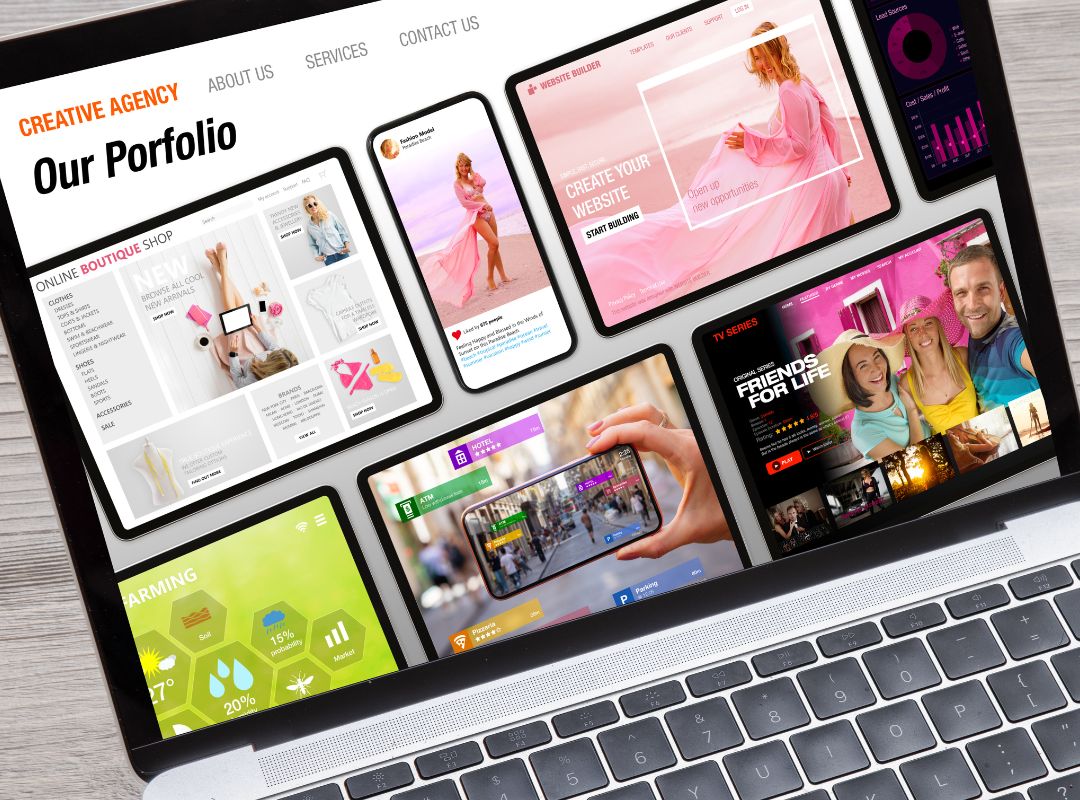Top design tips for your advertising
What’s the first thing you do when you’re about to make an ad? You probably start by jotting down a few notes or a rough sketch, right? The ad design process can be a little tricky, though—and if you don’t have the right tools or techniques, it can feel like trying to catch flies with your hands. But if you follow these simple tips, designing an effective ad will be easier than ever!
Brand Research
If you’re working for a client, rather than your own company, begin by researching the business, and getting a sense of who they are and what they do. What feels appropriate to their brand identity?
If you’re producing an ad for your own business, you’re more likely to have this insight already, and may be able to jump to the initial design phase.
Use simple, readable fonts for headlines
Use a font that’s easy to read. The biggest mistake you can make with fonts is using one that’s difficult to read, especially if you’re targeting older demographics or people with disabilities. Use fonts that are clean and simple, with letters that are easy for the eye to follow.
Choose a font that fits your brand’s tone and aesthetic. If your company is sophisticated and stylish (think luxury brands), then choose something elegant—perhaps a serif font like Times New Roman, or even Garamond; if you want to make a statement, try something stronger like Impact; if you want to express friendliness (like an animal shelter), consider something cute like Papyrus; if it’s important for you not to come across as overly formal (like an accounting firm), consider using something more modern such as Calibri.
Make sure it’s big enough for people who will be viewing it from far away (or those who have poor vision). This isn’t just true of advertising; any printed materials should have large enough print so they can be easily read by everyone at any distance without strain or difficulty.
Have a hook
A hook is a way of capturing your audience’s attention and keeping it long enough to make an impact. A good hook can be anything from an emotional appeal to humour, or even something as simple as a question that makes you think or ask more questions.
There are many types of hooks:
- The “you” hook appeals directly to the reader by addressing them directly (“You’ll never believe what happened at my house today!”)
- The “how” hook asks how something can be done (“How do I make my business more profitable?”)
- The “so what?” hook makes you want to know why something is important (“This new technology could revolutionise our business”)
Make sure the elements of your ads are balanced and aligned
Make sure the elements of your ad are balanced and aligned.
In order to make sure that your content is easy to understand, scan, and interpret, it’s important to make sure the elements are balanced and aligned.
This means:
- The headline should be in a larger font than the sub-headline.
- The main copy (body text) should be in a larger font than any other copy.
- There should be enough space between each element so that it is still easy for readers to know where one element ends and another begins.
Keep it brief
When it comes to writing copy, the shorter the better. You want to keep your audience’s attention and make sure you’re focusing on one message at a time — there’s no need for wordy or lengthy paragraphs here! It is important that you keep your writing focused on what matters most: selling your product or service, and making sure that your message resonates with them. Relevant content will help ensure that readers are interested in what they’re reading, rather than looking elsewhere simply because they’ve lost interest after reading too many words.
Plan the placement of your text and logo
First, plan the placement of your text and logo. The headline, logo, body copy and call to action are all areas where you can start creating an effective ad. When planning out these elements, use a grid to help you determine the best layout and spacing for your design.
Use the same font for all text in your ad so it looks consistent across all ads. This will make it easier for readers to quickly identify an advertisement from content on a page or site.
Use the same logo for all ads as well—it’ll make them recognisable when they’re viewed together in an album or gallery or grouped with other ads (like on social media). Over time, this also helps build brand recognition by linking messages across different channels of communication (email newsletters, social media posts, print, or landing pages). This is especially helpful if you plan on using multiple platforms during a campaign cycle to help tie everything together.
Simplify your copy
Simplification is one of the most effective ways to build trust with your audience. Your goal should be to make your copy as easy and clear as possible, while still conveying all the information you need to convey. This means using short sentences, simple words, limited number of fonts and colours, and a limited number of images (if any). For example: “Buy now!” instead of “Click here now!” or “Buy today” instead of “Order now.”
Use whitespace to highlight important info
Whitespace is the space between elements. You can use whitespace to emphasise a particular element, or separate elements from one another. This can be done in a number of ways, with varying degrees of effectiveness.
For example, you could use leading (the vertical distance between lines) to emphasise text or images by creating long paragraphs and small gaps between paragraphs. Or you could use negative space (the area that surrounds an object, such as a single line separating two paragraphs) to highlight certain parts of your copy more than others.
For example, displaying only part of an image on the page while leaving some white space around it so that it stands out visually from its surroundings.
Have a colour palette in mind from the start
Think about your reader. Colour has a psychological effect on everyone, but it’s especially important for the person who is going to be reading your ad. Are you targeting women in their mid-twenties? If so, your colour palette should include the colours that have been shown to resonate with that group—pastels, pinks and lots of light blues and greens. If you’re advertising something geared toward men, try bolder colours like reds and oranges. The key is to use vibrant hues that reflect what your audience wants or needs from your product or service: if they want excitement and energy, then use those colours (think hot pink); if they want comfort (think muted blues), go for those instead.
Design first for digital, then for print
While this best practice is not new, it’s still worth repeating. If you design for digital first, you can be certain that your ads will look great on every device. Alternatively, if you design for print first, you’ll have to make changes when it comes time to publish the ad online—which may involve hiring someone else (or yourself) to create separate versions of the same ad.
This isn’t just a convenience issue; it’s also an opportunity cost: If a company spends time and money creating two different versions of an ad instead of one good version that works on both digital and print platforms, they’re missing out on potential sales. The answer? Designing simultaneously for both digital and print platforms ensures that no matter where your ads run, or how many screens they appear on (including mobile), they’ll always look their best!
Try different ad formats and sizes to see what works best for you
The different ad formats and sizes are ideal for different uses. For example, a small ad can be placed in a magazine or newspaper, whereas a large ad can be used on billboards or the side of buses. Large ads are also commonly required for printed posters. Each will have specific dimensions, so be sure to check what’s required from the printer/exhibitor.
A few things to keep in mind from start to finish
Designing an ad is a process that requires attention to detail; it’s important to take the time to get it right.
There are a few things to keep in mind from start to finish:
- What is the purpose of your ad? Is it to build brand awareness, generate leads, or drive sales?
- Who is your target audience? Who will benefit from your product or service?
- What is your message? What do you want to communicate to your audience? How will you deliver this message in the most effective way possible?
Conclusion
As we’ve seen, there are many things to consider when designing an ad. But if you keep these tips in mind from start to finish, you’ll be on your way to creating the most effective ad possible!





